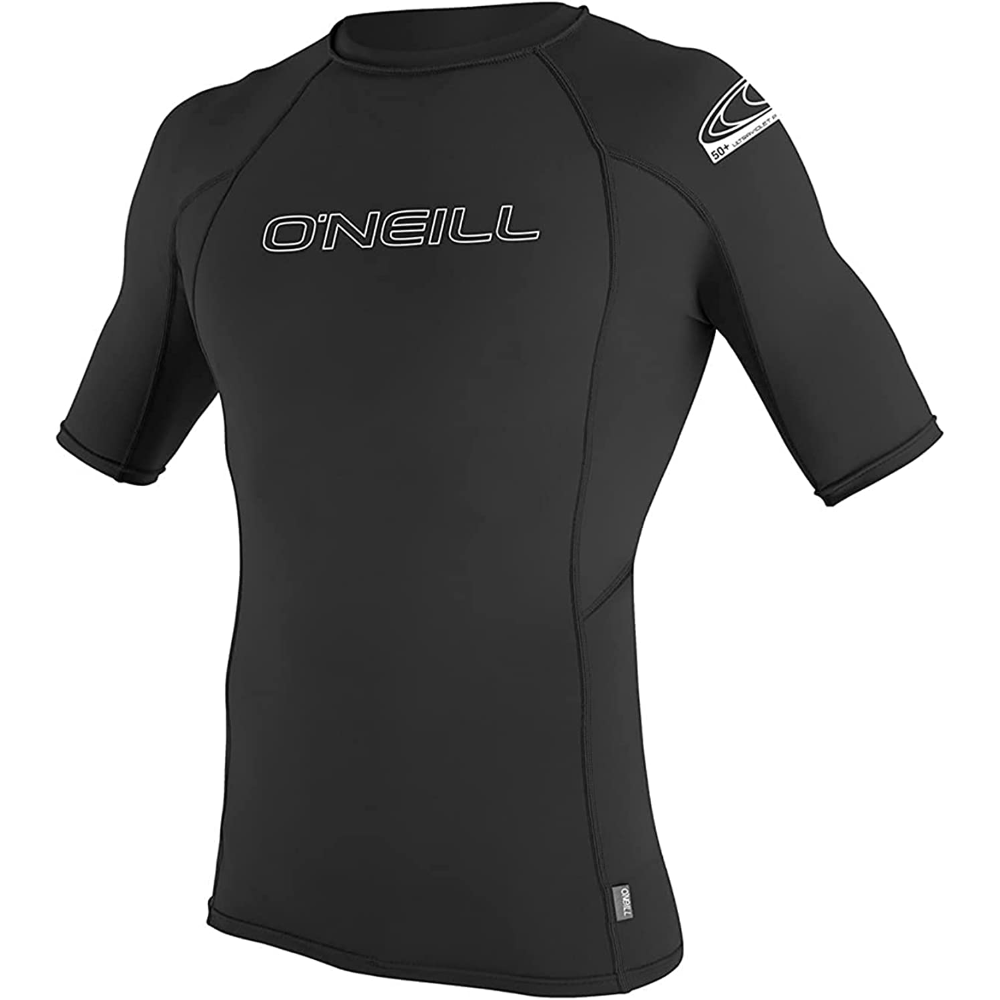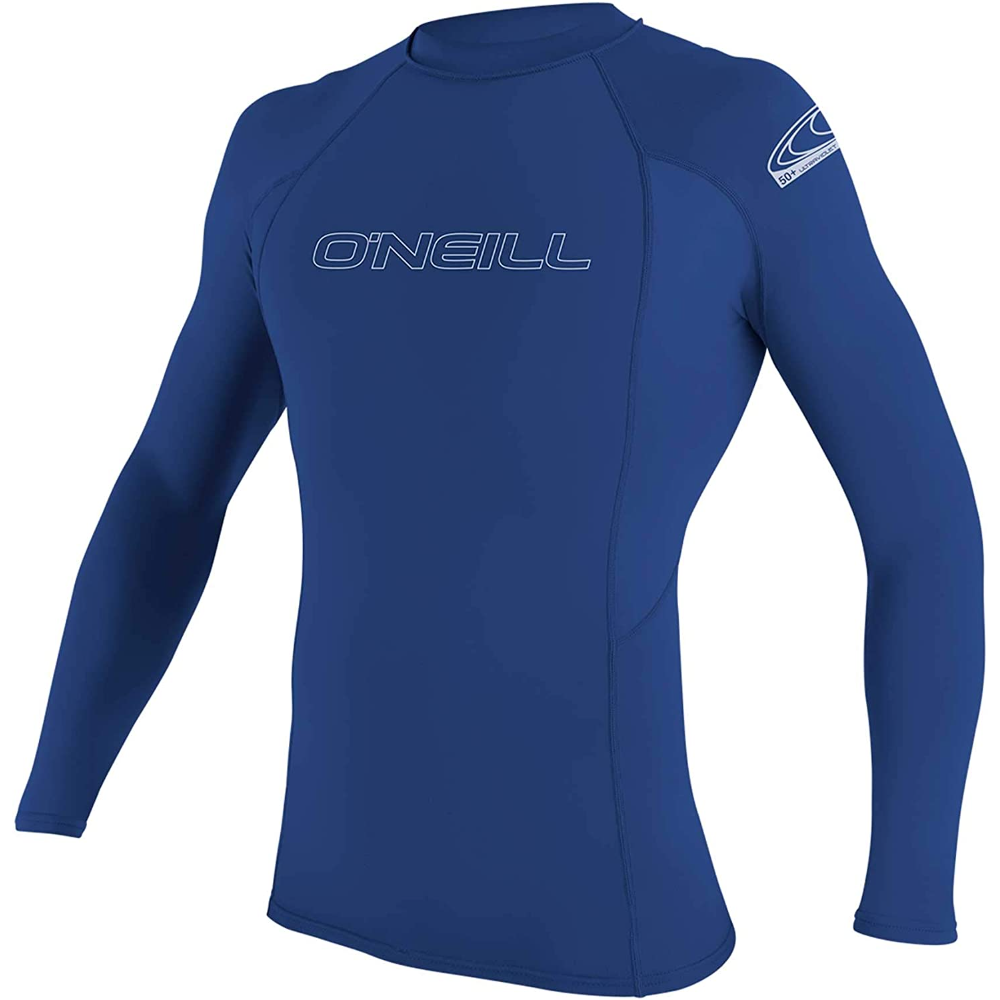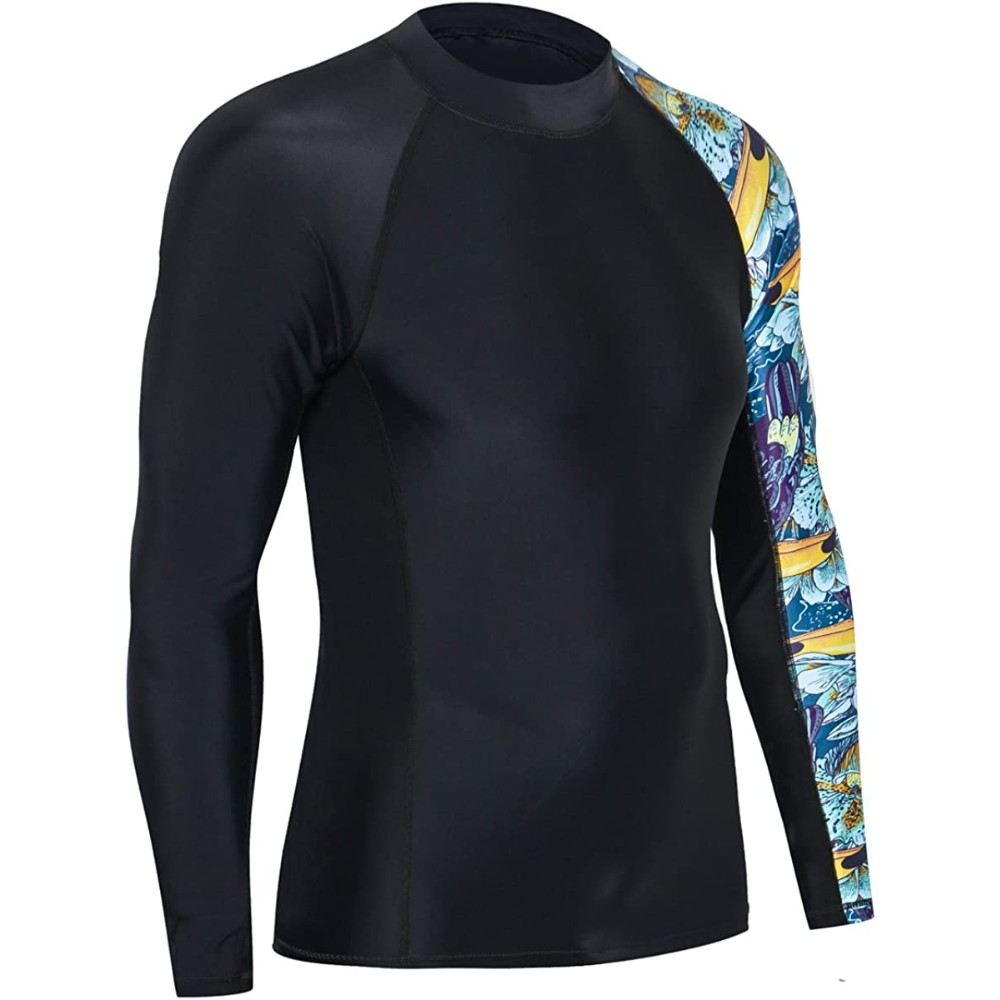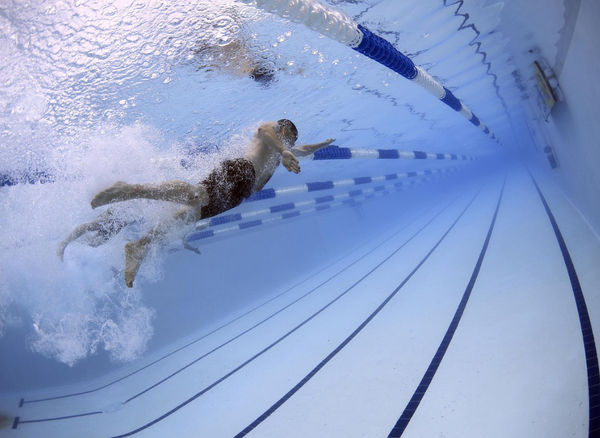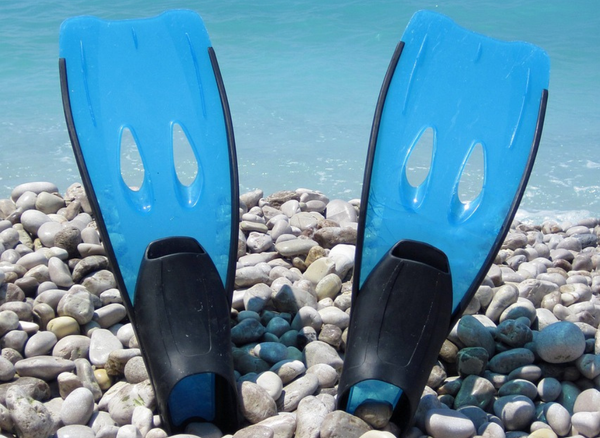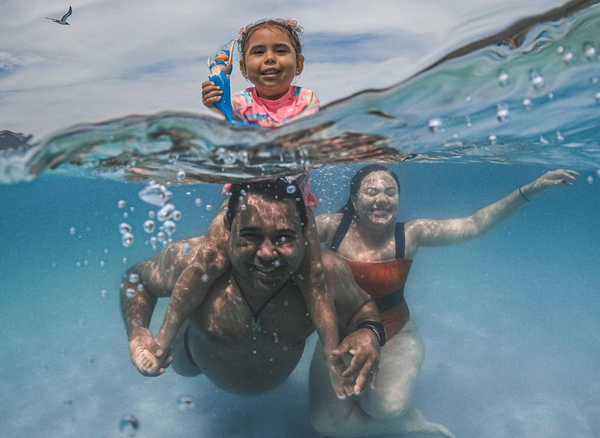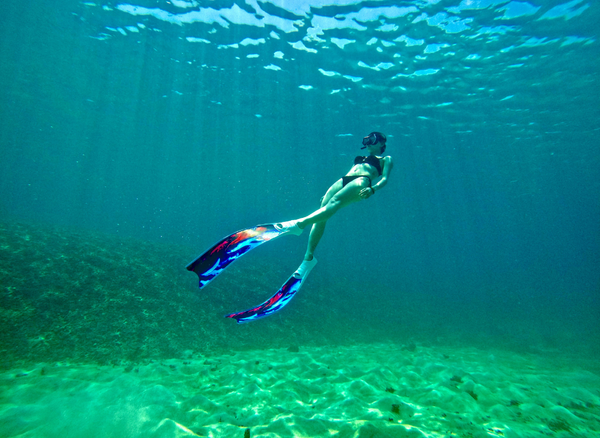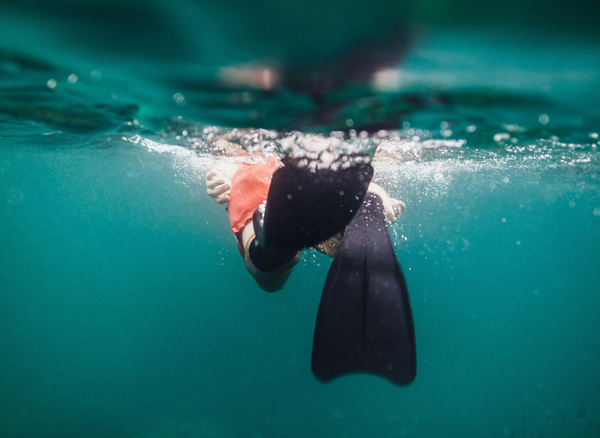When divers and swimmers enter the water, rash guards can be utilized to keep them safe. With this extra layer of protection, they can function as a second skin.
When swimming, you can wear a rash guard to protect your body from anything that can irritate or damage you. When you go diving, you may require a lot of protection! Rash guards can be a good solution.
However, there are many types of rash guards. You need to consider several factors before purchasing rash guard for your next dive. No worries if you don’t know what to consider. Here, we will discuss some of the necessary things.
Moreover, we will also share our picks for the best diving rash guards. Stay tuned to learn more. Let's dive in!
Factors To Consider for a Rash Guard
Let’s examine the factors you should consider before purchasing a rash guard. Neglecting these factors may lead you to waste your money and time. So you may you need to take into consideration some of the following factors.
Fit
A diving rash guard should be snug, well-fitting, and tight against your body. A rash guard that is too loose won’t be able to provide any warmth and will drag unnecessarily in the water. You can have a decent protection level with a looser rash guard, in case you really don’t want to wear tight clothing, particularly at the beach.
Sun Protection
The degree of sun protection will differ depending on the thickness and design of the material.
Look for a rash guard with a high UPF if you have fair skin or are concerned about sun protection. The UPF (Ultraviolet Protection Factor) rating will help you know how much UV radiation, including UVB and UVA, will pass through the rash guard’s material and reach your skin.
Can You Stay Warm with A Rash Guard?
As previously indicated, the initial purpose of rash guards was to avoid rubbing rashes and irritation, not to offer thermal protection.
If you want a rash guard that keeps you warm, select one made from neoprene or fleece-like material. The rash guard will be warmer if it is thicker. Generally, the rash guards will range from 0.5-4mm.
For diving or snorkeling, you may prefer the rash guard wearing ease than a full wetsuit that can keep you warmer.
Alternatively, having that tiny bit of extra warmth beneath your wetsuit might be amazing, especially if you frequently dive each day, as you might on a liveaboard.
Remember that wearing a neoprene rash guard while scuba diving will impair your buoyancy. Therefore, you should add a little weight.
Should I Wear Rash Guard with Long Sleeves or Short Sleeves?
It is up to you on this one. Undoubtedly, a rash guard with long sleeves will provide additional sun protection. However, many people detest donning long sleeves in sweltering weather.
Long sleeves may feel a touch constrictive on the arms and shoulders if the rash guard is extremely thick and provides excellent thermal protection.
When you get in the water, you will be relaxed and become more comfortable; therefore, most restrictions are related to comfort outside the water.
Additional Features
Rash guards frequently come with some useful accessories that are worth taking into account. As an example, thumb hook or thumb hole slits, one of the features I love, are quite helpful for holding your sleeves in place as you slip into your wetsuit.
You may notice that rash guards may roll up when you're active. What you may require are boardshort connectors! These are essentially little loops at the hips that aid in maintaining the rash guard’s position. Another choice is a full bodysuit.
Do you need more sun protection? A hooded rashguard can provide an extra layer of protection for your ears, head, and neck. Additionally, it aids in keeping hair out of the way during swimming. Some rash guards have pockets as well!
Are you still trying to decide which option to select?
In the end, rash guards are a fantastic sunscreen substitute. The rash guard that makes you feel the most at ease is the one that is perfect for you, whether it’s a rash guard with the best fit, the highest level of sun protection, or simply one that will keep you a bit warm and cozy.
🏅 Best Overall
O'Neill Short Sleeve Rash Guard
❤️ why we love this rash guard
It is a short sleeve rash guard with minimal seam placement that feels comfy and is ideal for wearing separately or even under a wetsuit. These diving rash guards are available in different sizes.
The primary benefit is that it promotes mobility throughout the O’Neill Wetsuits narrow-sleeved rash guard with cost-effective options.
💦 features
Polyester and spandex were used to create this gorgeous item. Only the machine wash method can be used to wash it. After numerous washes, it remains intact. Moreover, a tight performance fit is also produced, hugging your physique like a bodysuit.
🥈 Silver medal
O'Neill Long Sleeve Rash Guard
❤️ why we love this rash guard
This rash guard is delicately and hygienically made to avoid rashes even during outside athletics and interior activities without any inconvenience or discomfort. You can get this diving rash guard in different colors and sizes.
This one has few openings and is perfect for wearing alone or underneath a wetsuit to prevent rash. Moreover, this mixture has strong UV protection with little heat absorption.
💦 features
This rash guard is a combination of polyester and spandex. It snugly fits your body. Additionally, it can only be machine washed and worn for all activities. The package dimensions are 9.84 x 9.21 x 1.89 inches.
🥉 Podium Pick
HUGE SPORTS Skins Rash Guard
❤️ why we love this rash guard
The two-way stretch fabric in this lovely rash guard stabilizes muscles with compression. This prevents weariness and energy loss. As a result, you can consider it the best option. This diving rash guard is available in multiple sizes and colors.
This one is suitable for athletic & recreational outdoor activities and water sports such as hiking, boarding, swimming, surfing, etc. It also has UPF 50+ ultraviolet protection.
💦 features
It is imported and consists of 80% nylon and 20% spandex. Additionally, this rash guard is appropriate for outdoor athletic and recreational activities.
Additionally, you can use it for other aquatic activities, including surfing, swimming, boarding, and trekking.
These are the three best diving rash guards. Choosing one of these rash guards will provide you with an amazing experience. So, with any of these diving rash guards, you can enjoy your diving time.
Diving Rash Guard FAQs
Do you need a diving rash guard? Chances are, if you're reading this, you've either just finished a dive or are getting ready to go on one and you're not sure if you need to bring a rash guard. A diving rash guard can be incredibly helpful in preventing skin irritation caused by wet suits and other gear. Not only does it keep your skin from chafing, but it can also protect you from the sun's harmful rays. Check out the following Frequently Asked Questions to learn more.
What is the purpose of a rash guard?
A rash guard is a type of shirt worn by surfers and other water sports enthusiasts to help prevent rashes caused by abrasion against the skin. Swimmers also wear rash guards to protect themselves from the sun's UV rays, which can cause skin cancer. They can also be worn under wetsuits to provide insulation.
Can you wear a rash guard under wetsuit?
Yes. A rash guard can be worn under a wetsuit to provide an extra layer of insulation and protection from the cold.
Rash guards are made of a thin, stretchy material that fits close to the body and traps air between the fabric and the skin, providing insulation against the cold water. They are also designed to protect the skin from scratches and abrasions.
If you are going to be surfing in cold water or diving in cold weather conditions, it is a good idea to wear a rash guard under your wetsuit for added protection.
Is rash guard same as wetsuit?
No, a rash guard is not the same as a wetsuit. A rash guard is a type of swim shirt that is made of spandex or nylon and is worn to protect the skin from rashes caused by abrasion or friction. A wetsuit, on the other hand, is a type of clothing that is worn by divers and surfers to keep them warm in cold water. Wetsuits are made of neoprene, which is a synthetic rubber material.
Can you stay warm wearing a rash guard?
Rash guards are not designed to regulate body temperature; they are created to block, reflect, and absorb the sun’s rays. Some rash guards do have thermal protection built right in.
Which rash guard shade is ideal?
Although taste matters, the rash guard’s color is vital. In colder climates, a darker rash vest would be preferable. A brighter rash vest would be appropriate in a tropical climate. Dark hues are excellent for chilly climates since they absorb the sun’s UV radiation. You’ll stay cooler by wearing white and other light colors.
How should I clean my rash guard?
While some rash guards can be machine-washed, some must be hand-washed. How many washings the UV protection will withstand is typically stated on the clothing tag of rash guards. If using a washing machine worries you, try hand-washing the rash guard or running it through a cold or gentle cycle. Additionally, you must stay away from using the dryer.
Do you wear anything under a rash guard?
There is no general consensus on this matter, as people have different preferences and opinions. Some people wear nothing at all, others prefer to wear a light top underneath, and still others prefer to wear a sports bra, or bathing suit. Ultimately, it comes down to personal preference.
When should you wear a rash guard?
You should wear a rash guard when you are participating in water activities that could cause skin irritation. For example, if you are diving, surfing, or kayaking. A rash guard can help protect your skin from becoming irritated by the salt water or the sun.
What is rash guard made of?
Rash guards are typically made of spandex, nylon, or polyester.
Are rash guards better than sunscreen?
Yes, rash guards are better than sunscreen. They provide almost total protection from the sun's harmful rays as opposed to sunscreen where you may have to apply or reapply to areas to help block the sun's rays
The Diving Rash Guard for You
There are numerous types of diving rash guards available throughout the market. However, you must consider multiple factors before purchasing the rash guard to make your investment worthwhile.
We've shared some significant elements above to enable you to select the best rash guard for your needs. In addition to the buying guide, we also share a few picks for rash guards that may meet your diving needs. Good Luck!
Some of the links on this website may generate an affiliate commission, at zero cost to you. As an Amazon Associate, we earn from qualifying purchases. Your subscription and associate links helps make this site possible; and allows Gold Medal Ratings to exist. Thank you!





